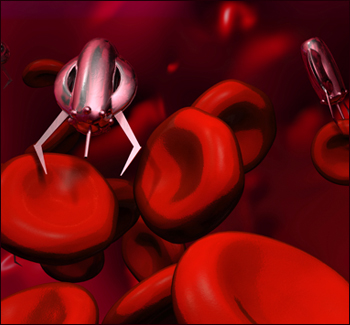New class of carbon molecules to pave way for tomorrow''s semiconductors
 Washington, Sept 9 : Virginia Tech researchers have created a new class of stable fullerene molecules by replacing a carbon atom with nitrogen in the all-carbon structure.
Washington, Sept 9 : Virginia Tech researchers have created a new class of stable fullerene molecules by replacing a carbon atom with nitrogen in the all-carbon structure.
Chemistry Professor Harry Dorn says that this work may pave the way for molecular semiconductors and quantum computing applications.
Fullerenes are a family of carbon allotropes, molecules composed entirely of carbon, in the form of a hollow sphere, ellipsoid, tube, or plane.
In a previous study, Dorn had devised a way to play with fullerenes, and displayed how to put other atoms inside an 80-atom molecule.
He also showed how to change the number of atoms forming the carbon cage, and how to change the number and kinds of atoms inside the cage, which could form more sensitive MRI material and a vehicle to deliver radioactive atoms for applications in nuclear medicine.
In his latest study, while trying to place gadolinium atoms inside the carbon cage for MRI applications, he created 80-atom carbon molecule with two yttrium ions inside.
Later, he managed to replace one of the 80 atoms of carbon with an atom of nitrogen (providing Y2@C79N), which caused the nitrogen atom to bear an extra electron.
However, the extra electron, was on the fullerene cage surface rather than on being on the nitrogen atom, and thus formed a one-electron bond between the yttrium ions.
"Basically, a very unusual one electron bond between two yttrium atoms. No one has done anything like this. Since the article was published, we now know that we can take the electron back out of the fullerene cage," said Dorn.
He claimed that the discovery of this stable molecule could be important to the new fields of spintronics, molecular electronics, and micro to nanoscale electronics, as well as the new field of quantum computing.
"The single electron bonded-diatomic yttrium has unique spin properties that can be altered. Increasing the polarization of this spin, could be important for improving the sensitivity of MRI and NMR," he said.
However, he thinks that the most interesting implication of this discovery would be seen in electronic applications.
"If we replace one of the carbon atoms with boron instead of nitrogen, we would be an electron short, instead of having an extra electron. Now you have the components of a semiconductor," said Dorn.
"I don''t down whether it is important yet or not. People have been working on adding a nitrogen atom to standard 60-carbon fullerene," he said.
This research is reported in the latest online issue of the Journal of the American Chemical Society (JACS). (ANI)
